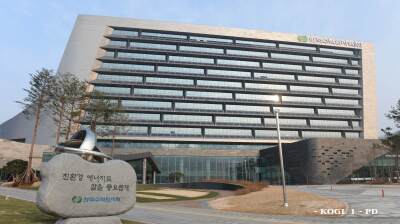With nuclear a key part of the energy transition to zero emissions, the world uranium market continues to assess the implications of guidance from Kazatomprom, the world's leading producer of the heavy metal, in which the company lowered its production forecast for 2025 to 25,000-26,500 tonnes, down from the previously anticipated 30,500-31,500 tonnes.
The Kazakh company partly attributed the adjustment to ongoing delays in construction at new deposits and difficulties in securing sulfuric acid, which is essential for uranium extraction. The adjustment followed an earlier increase in this year's production target to 22,500-23,500 tonnes.
Kazatomprom previously indicated that if restricted access to sulfuric acid continued into 2024 and the company proved unable to address the construction backlog at new sites, there could be negative impacts on its production plans for 2025.
Uranium mining in Kazakhstan is exclusively conducted via in-situ leaching, recognised as the most environmentally friendly and cost-effective method available.
Aside from issues with production, Kazatomprom appears to be facing issues on several other fronts.
Exports and uranium sales
The ongoing war in Ukraine, sanctions against Russia and resulting global supply chain issues have forced Kazatomprom to diversify its export routes. The company still exports uranium products to customers in North America and Europe via the Russian port of St Petersburg.
Kazakhstan revealed an initiative earlier this year to diversify its uranium export routes to avoid dependence on Russia. As part of this effort, Kazatomprom is negotiating with Chinese companies CNUS, CNEIC, and CNNC to secure uranium transit services through China.
The country is also looking to rely on the Trans-Caspian International Transportation Route, or TITR, to bypass Russia.
Sales and operating profits
The company reported a significant increase in net profit for the first half of 2023, driven by higher market prices for uranium. Net profit surged by 27% y/y to ($590.1mn), while revenue rose by 13% to KZT701.1bn. The boost in profits was primarily due to rising uranium prices, which have surged amid growing interest in nuclear energy as a solution for both energy security and decarbonisation.
Despite the profit gains, Kazatomprom faced higher costs of sales, which jumped 38% y/y to KZT443.36bn, leading to a 10% y/y decline in operating profit (KZT226.72bn).
Moreover, the company earlier reported a 55% decline in uranium sales in 1Q24, which also led to a decline in net profit in the period.
MET Tax
Tim Gitzel, CEO of Cameco, the Canadian uranium producer, warned in a press conference earlier this month that Kazakhstan's uranium production might become less attractive due to a new mineral extraction tax (MET) set for 2025, Kazakhstan’s Kursiv news agency reported.
The historically low uranium production costs in Kazakhstan could increase, impacting Kazatomprom's competitive edge, according to Kursiv’s report. Currently, Kazakhstan has a 6% MET rate for uranium, but this will rise to 9% in 2025. By 2026, the tax will vary between 4% and 18%, depending on production volumes (500 tonnes to 4,000 tonnes).
Gitzel stated that, if MET stays as planned, Kazakhstan's costs could match those of Cameco’s northern Saskatchewan operation in Canada, depending on uranium prices, production and exchange rates.
While Cameco benefits from high production costs in Kazakhstan to curb competition, it also favours lower costs for its joint venture with Kazatomprom. Cameco holds a 40% share in Inkai, a uranium producer in Kazakhstan's Turkestan region, with Kazatomprom controlling 60%.
Inkai reported lower uranium output in 2Q24 due to sulfuric acid supply issues.
Gitzel highlighted the supply chain problems and the upcoming tax reform as major concerns.
He emphasised that rising costs amid industry recovery were affecting 40% of global uranium production. And he stressed that future investments would hinge on higher long-term prices due to uncertain demand and supply stability.
bneGREEN

Kyrgyzstan says neighbours “upset” by country’s lack of water
“This year we were supposed to overcome shortages, but instead, they have intensified,” deputy head of cabinet tells Uzbekistan and Kazakhstan.

EXPLAINER: What is the EU’s CBAM and how will it affect global trade from 2026?
The European Union’s Carbon Border Adjustment Mechanism (CBAM) will enter its full operational phase on January 1, 2026, marking a major shift in global climate and trade policy.

Iran faces critical water crisis after driest year in five decades
Iran faces critical water crisis after driest year in five decades with 40% nationwide rainfall drop.

Global renewables to double by 2030, but IEA warns momentum must accelerate
Global renewable energy capacity is on course to double by 2030, reaching 4,600 GW—comparable to the current combined total of China, the European Union and Japan—according to the International Energy Agency’s Renewables 2025 report.



